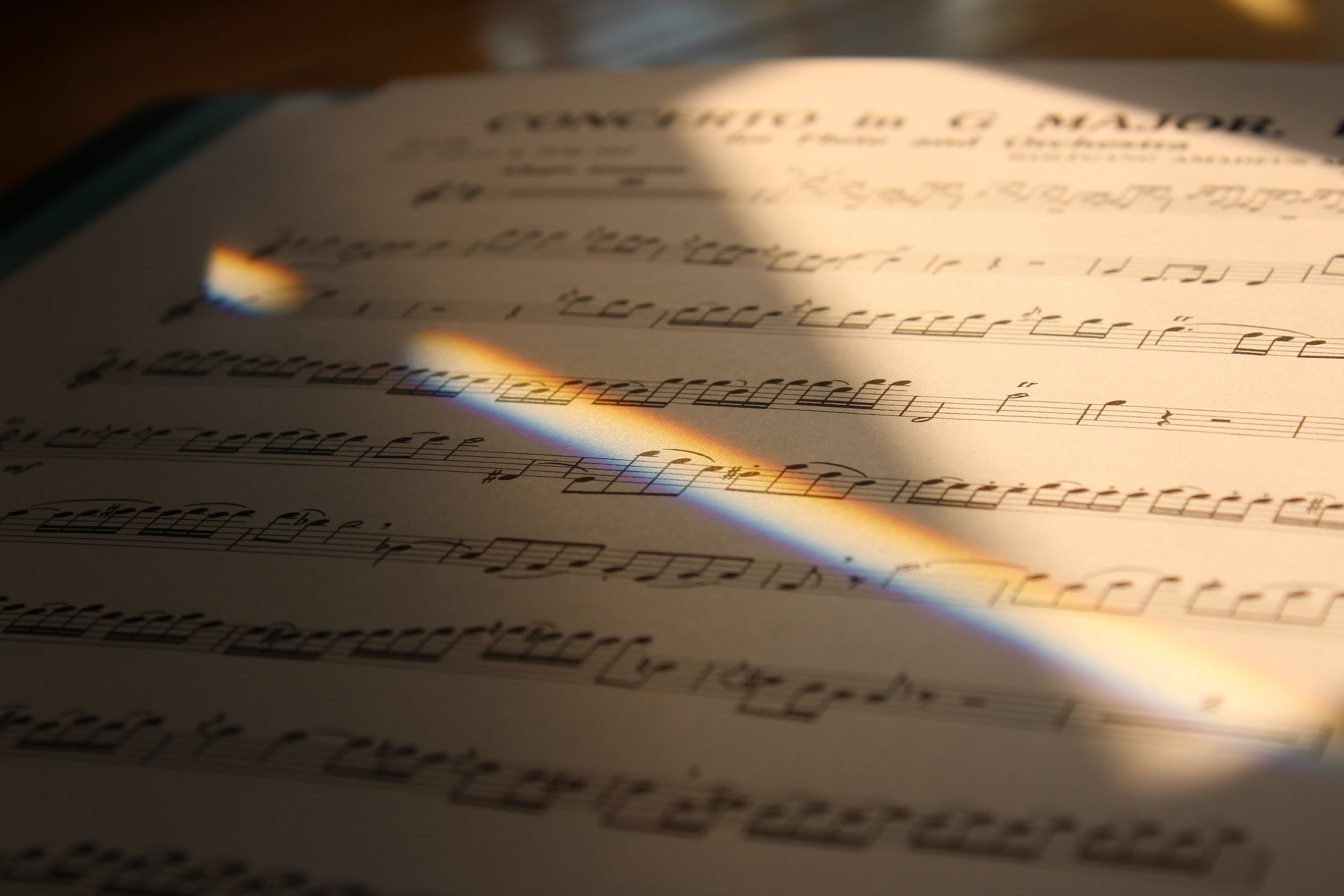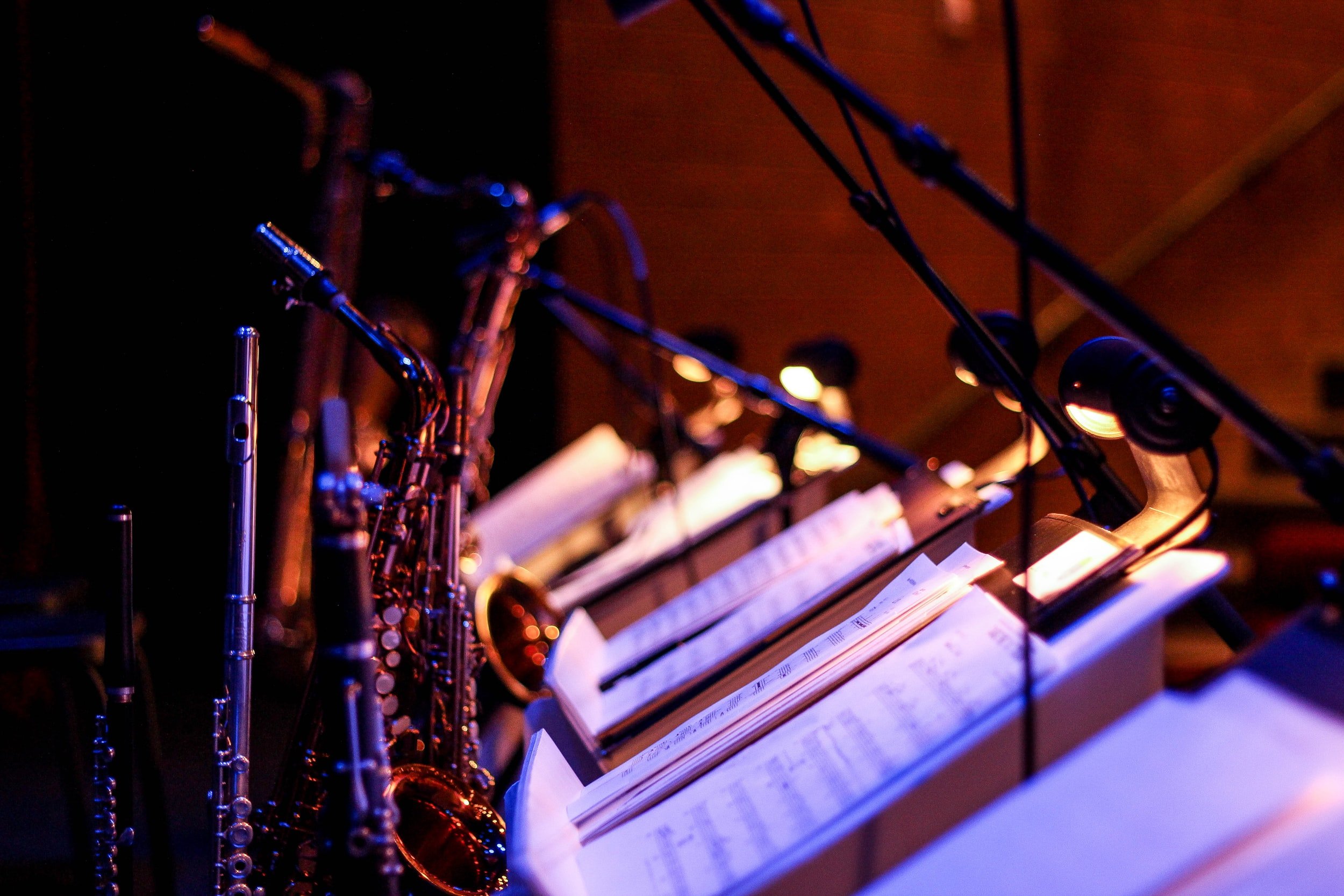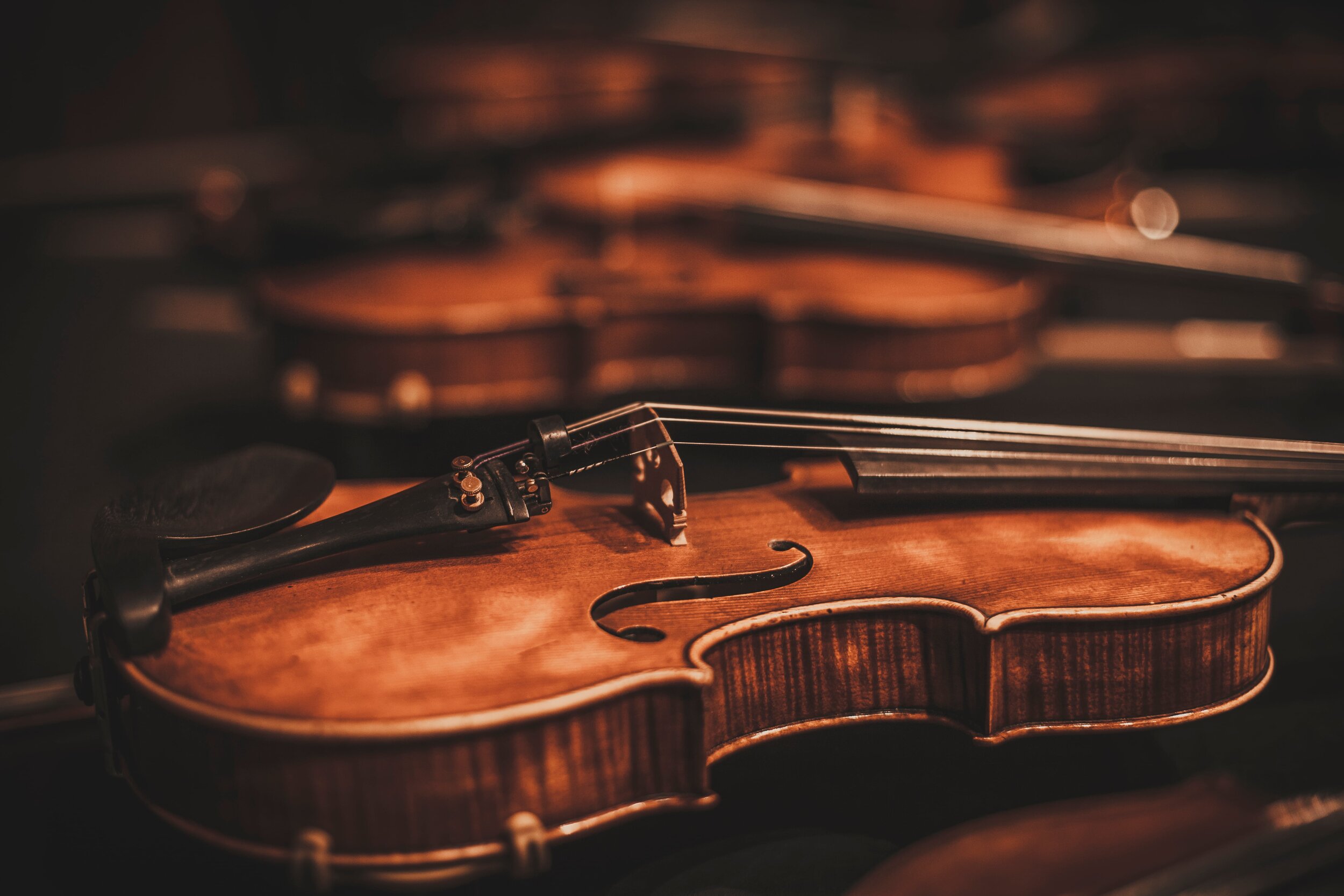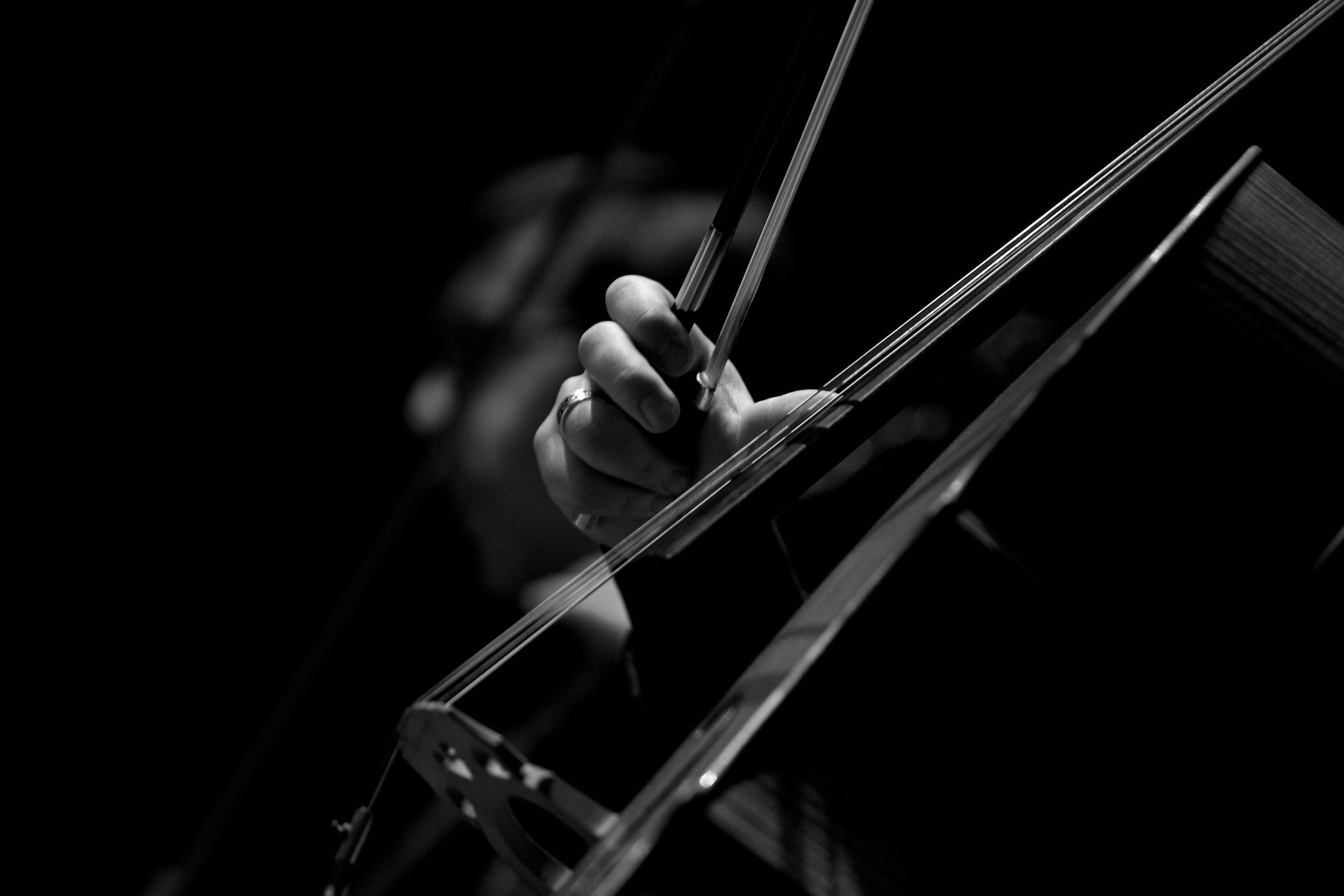Percussion | Non-Struck Percussion
Percussion | Non-Struck Percussion
Extreme Orchestration
by Don Freund and David CutlerPublished: February 2024
All of the instruments discussed thus far are struck as a primary means of sound production, but a number of percussion instruments are played in other ways. Objects can be shaken, scraped, pulled, cranked, blown, etc. Some of these instruments imitate nature sounds (composers seem to have a particular obsession with the weather) or everyday life, while others are used simply to create rhythms, texture, or noise. With few exceptions, these instruments are non-pitched.
Quite a few instruments, in addition to the aforementioned tambourine, must be shaken in order to produce a sound. The sound is produced by loose material(s) hitting a fixed surface. Though any kind of bell, from doorbells to church bells, is fodder for an orchestrator’s imagination, bells have been relatively infrequently exploited. Sleighbells (sleighb.) conjure images of Christmas to even the biggest skeptic. A collection of metal balls lodged in an equal number of metal casings is attached to a cylindrical wooden rod. Commonly, the end of the rod is held in one hand at the top while the other palm hits the hand, causing the bells to jingle, though it may also be shaken.
Maracas (mrcas.), a Mexican invention, follow a similar concept, but in this case a hollow gourd attached to a handle is filled with a collection seeds or other substance. It is shaken to make a sound, and is usually played in pairs with one in each hand (though single maracas are possible, or two may be placed in each hand to increase the amplitude.). Short attacks, marked with staccatos, may contrast slightly longer ones, and rolls are possible by swirling the instrument or shaking it back and forth. Tapping a maraca results in a short, controlled shake. Eggs are poor man’s maracas, simply plastic shaped containers in the shape of an egg filled with some kind of a substance.
Cabasas (cabz.) are similar to the maracas in that there is a round, hollow gourd, but in this case, a system of beads are woven around the gourd. Modern cabasas usually drape tied metal beads over a metal, slightly notched gourd, connected to a handle. Though it may be shaken, a more typical way to play the instrument is to place the hand over the beads and rock them back and forth. The tone results from the scraping friction, resembling the sound of sprinklers.
The shekere (shek.), an African instrument, also combines a set of woven beads over a hollow gourd. Shekeres can be shaken and rocked from side to side, but for a showy effect, specialists often throw them high into the air. A sound is made as it leaves the hands as well as when it is caught.
The rainstick (rainst.) is a large, hollowed out log, filled with loose objects. As it is flipped upside down, gravity pulls the inner material towards the downward side, evoking the pitterpatter of rain. It can take up to a minute for all the material to transfer from top to bottom (though the sound can be stopped immediately by turning it horizontally).
On the topic of weather, a thundersheet (th.sh.) is a sheet of thin metal attached to a frame. These instruments are usually rather substantial in size, but don’t be fooled—the sound is usually not as loud as might be thought. More convincing at softer dynamics, it may be possible to hear the roar of thunder in the distance as the metal is shaken. For a more reliable thunder effect, consider using a bass drum roll.
The flexatone (flex.) has a thin, flexible, metal plate attached to a frame. On either side, a wooden ball is suspended by thin metal strips. When shaken, the two balls strike the plate in alternation, and bending the plate with the thumb changes the pitch. The lowest size ranges has a range of about E4 - C6 , and a smaller model sounds an octave higher. Though it is theoretically possible for flexatone to double a melody (approximately), there are very few successful examples of this in the literature. Producing fixed pitches is difficult at best, and the instrument is most often used for glissing tremolos in an unpitched manner, adding an out-of-control excitement and intensity.
A similar principle is use to control the pitch of a musical saw (saw). When bowed with a cello or contrabass bow, the blade of a toothless carpenter’s saw may be bent to control the pitch, producing an ethereal, vocal-like humming. As with flexatone, finding the exact pitch is difficult, and glissando and portamentos are characteristic. Many percussionists have difficulty controlling musical saws, but in the hands of a specialist it can be an effective melodic voice. Different sizes and ranges are available, spanning from approximately E4 - E7.
All scraped percussion instruments may be played in two directions (forward and backwards or up and down depending on the angle at which the instrument is held). Though usually left to the discretion of the player, the bowed string up- and down-bow symbols may be written to indicate scrape direction.
The guiro is basically a gourd with carved grooves. The right hand rubs a guiro scraper in one direction or the other to produce sound, while the instrument is cradled in the left arm. It originated in Latin America, and is often assigned regular, rhythmic patterns. Short and longer strokes (long strokes cannot last much more than a half second) are commonly combined, usually translating into a mixture of quarter and eighth notes.
Antique washboards (wash.) may be played similarly. In this case, metal thimbles, placed on the fingers of one or both hands, are used to scrape the metal grooves. Less commonly it is scraped with sticks or another mallet. Tapping on the metal produces a non-sustained click.
Sandblocks (sand bl.) are two pieces of wood, covered in sandpaper, that are rubbed together. They produce a soft, whispy sound, and can perform single, short attacks or rolls. Most often they are used at softer dynamics to establish a more or less regular pattern, as opposed to articulating single notes. One of the blocks may be fastened to a table or frame in order to free up a hand.
Bell trees (bell tr.) consist of a series metal bells rested on top of one another, gradually decreasing in size. Most often, a metal or triangle beater performs a magical sounding glissandolike gesture, scraping the mallet up or down the bell tree. Interestingly enough, the size of the bell does not directly correlate to its pitch, allowing this effect to produce a sprinkling of bell tones rather than a strict ascending or descending gesture. The direction of the gliss should be indicated with an arrow. Single pitches may be struck, but this is rather uncommon, as there are better choices for such a sound.
Musical crystal glasses (m. glasses) are most commonly played with wet fingers gently rotating around the rim, producing a high pitched hum reminiscent of string harmonics. Only tones with some amount of sustain are practical, since pitches have no distinct attack. Musical glass specialists have been known to perform chordal and polyphonic works with sets of glasses, but requiring much more than a sustained upper pedal from non-specialists may be risky. Glasses may also be lightly stuck for a bell-like sound. The pitch of a goblet depends on its size and the amount of liquid; adding liquid lowers the pitch. The typical range is C5 - C7.
String drums (string dr.) are technically drums, but are listed here because they are not struck or played with beaters. A variety of drums can be converted into string drums by attaching a string to the center of the head. When the string is pulled, usually with a glove or damp cloth, a moaning sound emerges. The bass string drum is often called a lion’s roar, referring to the sound that transpires. Tom-toms and other drums produce higher groans. A similar concept is used by the quica. In this case, a pole is run through the head of a bongo-type drum. The pitch can vary, but is often high and squeaky. A common Brazilian instrument, it often states a recurring pattern. It is a relatively unexplored sound in concert music, but certainly provides an interesting timbre.
Windchimes (windch.) are commonly available at nature stores, though sets used in the percussion section are usually homemade or specifically manufactured for performance. Various string-suspended objects, all attached to the same surface, sound as the hand swishes them around and they bounce into one another. A common type, with hanging aluminum or brass tubes, is called a mark tree (m. tr.). Windchimes may also be made of glass, metal, wood, or plastic dowels, and even items such as keys or silverware. The type of desired material must always be indicated. Depending on the material, they often create a mystical, spacey sonic backdrop. Windchimes may only be used for sustained effects, not specific rhythms.
Though orchestrators are generally peaceful people, gunshots have been required in several scores. Prop pistols fire an extremely loud bang. They do not have a real barrel, and can shoot only five or six blanks, at least a second apart. Popguns have a cork that is wedged in a hollow barrel. By quick thrusting a lever forward, the air pressure becomes too great, and the cork “pops” out of the gun, emulating the sound of a popping champagne cork.
Old-fashioned automobile horns (auto hn.) have been employed by a number of composers, including Gershwin and Ligeti. By squeezing the bulb of the horns, various pitches with rather short sustain are possible. Though difficult to obtain, they usually come in groups of four. Another charming old horn makes the sound “ah-oo-gah.” Bike horns are a less expensive and more available alternative. While in the sporting goods department, also seek out bike bells, which produce relatively soft “ch-ch-ching.”
The slapstick (slapst.), also known as a whip, makes a sharp, crackling sound, similar a whip being thrust upon the ground. Two pieces of wood, attached by a hinge, are quickly slapped together like a director’s clapboard. Though, in theory, these instruments should provide quite loud “thwaps,” they often wear out quickly, and can be disappointing and thinner sounding than might be imagined. However, some advances in slapstick design have made newer instruments more reliable. A vibraslap (vbslp.) is often referred to as the jawbone of an ass because they were originally made from donkey jawbones with teeth left intact. Now they are made with a hollow wood or metal block on top, a hard ball on the bottom, and a bent medal rod that holds the two together. When the ball is slapped, the rod quickly bounces up and down, like chattering teeth. Only individual attacks should be written for this instrument, as opposed to a line of sixteenth notes, due to the physics of playing it. Vibraslap notes can not last much more than a second or two.
Pairs of claves (clav.), round pieces of hard wood or plastic, are tapped against one another to produce its incisive attack. They are named after the common Latin American rhythm they are often asked to play. Similarly, it is possible to hit two beaters together to produce a click. This is most common with drumsticks.
Castanets (cast.) have their strongest association with flamenco and other Spanish dances, but their unique clicking sound can be creatively and effectively used in many other situations, such as a refreshing substitute for the snare drum at all but the loudest dynamics. Several types are available, but percussionists will automatically choose the appropriate kind for a given passage. All castanets consist of spoon-shaped wood or plastic shells that strike one another. Virtually any rhythm is playable on this instrument, including flam, drags, ruffs, and rolls.
A few percussion instruments require cranking a handle. Ratchets (ratch.), which are essentially professional versions of the noisemakers popular for celebrating New Year’s Eve, have two to four teeth that extend into a grooved wheel. As the handle is cranked, a grinding, ratchety sound is produced. Though single clicks are possible, most often these are used for extended “rolls,” which may last virtually any length. A succession of extremely fast articulations is not possible on ratchet.
Other cranked instruments include old-fashioned, hand-cranked police sirens and the wind machine (wind). Both have been used to reference real life occurrences, both should only be used for long, sustained pitches, both elicit arch-like sounds, and both have a direct correlation between pitch and volume: the higher the pitch, the louder the sound. Sirens are difficult to find, and mouth sirens, described below, may be a more practical solution.
Though whistles produce specific pitches, they are often scored as non-pitched percussion. (However, if you know that an exact pitch is available, feel free to notate it as such.) Any kind of whistle may be requested, and those that are played solely with the mouth may easily be used in conjunction with other instruments. Police whistles (pol. whis.) and referee whistles (ref. whis.) can be shrill or even deafening at loud dynamics. They are often attached to a string-necklace so they may simply fall from the mouth after performance. Slide whistles (slide whis.) require two hands—one to hold the instrument in place and the other to move the slide. Its ability to swoop up or down makes it ideal for comical glissandos, programmatically indicating someone has slipped on a banana peel. Train whistles produce three or four notes, just as a true train whistle would, and a number of bird whistles are available, imitating a variety of species. Duck calls produce a nasty quack, and can be purchased at hunting stores. Mouth sirens imitate a relatively soft high-pitched siren. Blowing air through this instrument causes a notched piece of plastic to spin, and more air (causing faster spinning) makes the pitch rise. In this case, what goes up must come down, but it is possible to abruptly inhale to quickly interrupt the sound. Any other kind of mouth whistling, of course, is also possible. The kazoo has been an age-old favorite, adding a buzz to pitches sung into the instrument. Fluttertonguing techniques may be applied to kazoo.
Instrument Studies for Eyes and Ears (ISFEE): These pages explore the techniques and timbres of the trombone, with scores synched to video recordings. Created by Don Freund, site designed by Reid Merzbacher. These links go to the ISFEE pages for:
Anybody in an ensemble may be asked to perform body percussion. Just about any sound that the body can produce is fair game, though some are in questionable taste. A few of the many examples are:
Hand Clapping. Cupping the hands or smacking them flat into one another can produce different timbres. Flamenco musicians have developed antiphonal hand clapping into an art form.
Finger Snapping. Not very loud, but can be effective with multiple players.
Foot Stomping. Best with hard-soled shoes on a wood floor.
Rubbing hands or body. Softer effect.
Slapping body. Possible to slap on the chest or legs (not recommend to slap the head, at least not at louder dynamics!)
Mouth sounds. Any kind of noise made with the mouth is fair game for a percussionist. (It may take some work to convince a string player to make the same sound.)
More percussion-related chapters from Extreme Orchestration
All Extreme Orchestration chapters
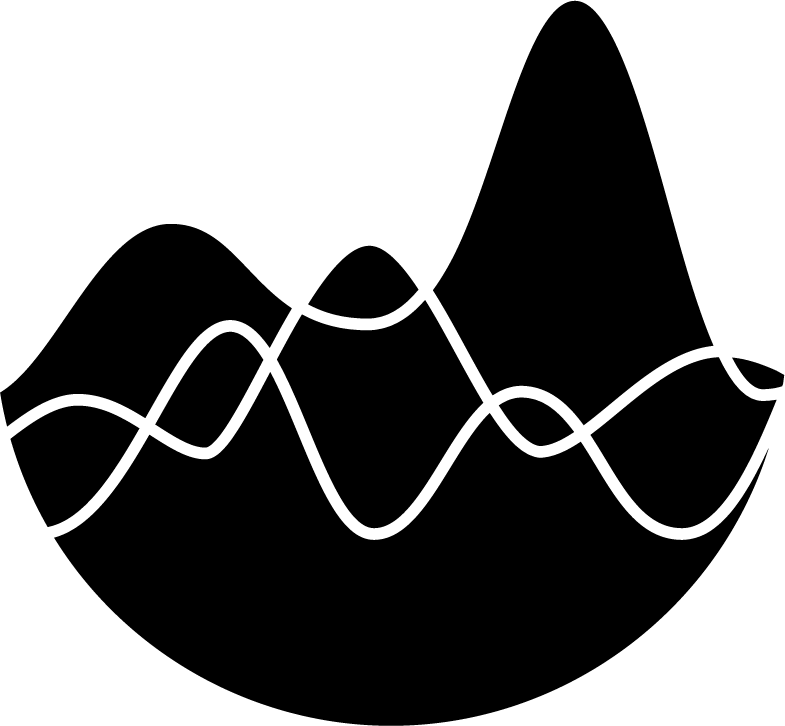
All Percussion Pages
On This Page
Pulled/Pushed/Squeezed Percussion







